North American Soccer League (1975-1984)
Major Indoor Soccer League (1982-1983 & 1984-1988)
Tombstone
Born: October 31, 1974 – NASL expansion franchise
Folded: July 8, 1988
First Game: April 19, 1975 (L 1-0 @ Vancouver Whitecaps – outdoor)
Last Game: April 16, 1988 (L 4-3 vs. St. Louis Steamers– indoor)
NASL Soccer Bowl Champions: 1981 & 1984
MISL Championships: None
Stadia & Arenas
Outdoor:
1975-1982 & 1984: Comiskey Park (47,444)11982 Official North American Soccer League Guide
1975-1983: Soldier Field (67,000)21983 Official North American Soccer League Guide
1975-1982 & 1984: Wrigley Field (36,000)31982 Official North American Soccer League Guide
Indoor:
1980-1986: Chicago Stadium (16,666)41984-85 Major Indoor Soccer League Media Guide
1986-1988: Rosemont Horizon (14,618)
Marketing
Team Colors:
- 1982: Black & Yellow51982 Official North American Soccer League Guide
- 1987-88: Black, Gold & White61987-88 Chicago Sting Media Guide
Cheerleaders: The Honey Bees
Mascot: Stanley Sting (The Bee)
Television:
- 1984-85 (MISL): SportsVision
- 1987-88 (MISL): SportsVision & WPWR (Channel 50) – Selected games
Television Broadcasters:
- 1984-85: Kenny Stern & Howard Balson
- 1987-88: Chet Coppock(play-by-play) & Mark Simanton (color)
Radio:
- 1984-85 (MISL): WYEN-FM (106.7)
- 1987-88 (MISL): WIND (560 AM) – Spanish
Radio Broadcasters:
- 1987-88: Alberto Augusto (Spanish)
Ownership
Owners:
- 1975-1987: Lee Stern
- 1987-1988: Lee Stern & Lou Weisbach
Sting Things
Chicago Sting Logo T-Shirt
We dig this North American Soccer League throwback tee honoring the Windy City’s two-time Soccer Bowl champions and their mascot Stanley Sting.
Also available as a women’s racerback tank, 3/4 sleeve raglan shirt or hooded sweatshirt from our partners at Old School Shirts!
When you make a purchase through an affiliate link like this one, Fun While It Lasted earns a commission at no additional cost to you. Thanks for your support!
Origin & Early Woes
The Chicago Sting were an accomplished pro soccer club that enjoyed success both outdoors and indoors during a thirteen-year run from 1975 through 1988. The Sting were formed on Halloween day 1974 as an expansion franchise in the North American Soccer League.
During the Sting’s early seasons under the direction of former Manchester United defender Bill Foulkes (1975-1977), the roster had a dominant British presence. The Sting were not a factor in the NASL championship hunt during this era (despite a division title in 1976) and drew very poorly as the team shuffled games between Comiskey Park, Soldier Field and Wrigley Field each summer. As late as 1978, the Sting had the worst attendance in the entire 24-team NASL. The club pulled just 4,188 fans per match that summer.
It’s rather remarkable that Sting owner Lee Stern, a Chicago commodities broker, hung in during such a long stretch of lean years. In fact, Stern would prove to be one of the most steadfast owners in American soccer, backing the money-losing club for its entire 13-year existence. And as the 1980’s approached, the Sting’s fortunes began to improve.
Here Come The Germans
The 1978 season started disastrously. Under new Head Coach Malcolm Musgrove (another British import), the Sting set a league record losing their first ten games of the season. Musgrove would be fired without ever registering a win for the Sting. But the English-heavy complexion of the club had already begun to shift under Musgrove. 1978 marked the arrival of West German striker Karl-Heinz Granitza, who would become the club’s greatest star, along with fellow German Arno Steffenhagen, another key contributor, and Danish winger Jorgen Kristensen. German assistant coach Willy Roy took over the coaching reigns from Musgrove and improbably led the 0-10 Sting into the 1978 playoffs (thanks to the NASL’s very generous playoff system).
In 1980 the Sting won a division title with the 3rd best record in the league (21-11). Granitza established himself as one of the NASL’s mostly consistently productive scorers. In 1981, the Sting were even better. The repeated as division champs with a 23-9 record, tied for the best mark in the league with the defending champion New York Cosmos. Pato Margetic, a dynamic 21-year old Argentinean arrived to team with Granitza up top and spark the most potent offense in the NASL. Margetic became an immediate fan favorite. Sting crowds had tripled since the low water mark of 1978, up to nearly 13,000 per match in 1981.
1981 Soccer Bowl Championship
The team’s growing popularity in Chicago was due in part to the Sting’s rivalry with and uncanny mastery of the New York Cosmos. The Cosmos were an international super club before such a concept really existed, featuring a collection of world all-stars such as Carlos Alberto, Franz Beckenbauer and Giorgio Chinaglia. By 1981, the New Yorkers had won three of the past four NASL championships. And the Sting absolutely owned them. Cosmos derbies became a big draw in Chicago. A June 1981 regular season match against New York drew a franchise record 30,501 to Wrigley field for a thrilling 6-5 Sting victory. (The Cosmos PR department later produced a short highlight reel of this match called The Greatest Game in NASL History.)
In September 1981, a new record crowd of 39,623 came out to Comiskey Park on a cold Monday night to watch the Sting eliminate the San Diego Sockers in Game Three of the playoff semi-finals. The win sent Chicago on to Soccer Bowl ’81, the NASL’s championship match. They would play their arch rivals, the Cosmos, at Toronto’s Exhibition Stadium on September 26, 1981. Improbably, the NASL’s two highest scoring teams played a scoreless regulation and overtime period. That sent the game into the NASL’s unusual “shootout” format to determine a league champion…
The Sting’s victory in Soccer Bowl ’81 gave the Windy City its first major professional sports since the Bears won the NFL championship in 1963. And if you think calling the Sting and the NASL “major” seems like a stretch, consider this: nearly 10,000 fans greeted the Sting at O’Hare Airport on their return home from Toronto and over 100,000 more lined LaSalle Avenue for a ticker tape parade a few days later.
Indoor Success
As the Sting were developing into one of the NASL’s best outdoor clubs at the dawn of the 1980’s, the league also began to experiment with indoor soccer. The Sting played their first indoor season in the winter of 1980-81 at the old Chicago Stadium downtown. They reached the indoor finals that first season, losing in a two-game sweep at the hands of the Edmonton Drillers.
The Sting quickly became a box office hit indoors. Their league-leading average indoor crowd of 13,322 at Chicago Stadium for the 1981-82 season was better than the average for any outdoor season the Sting ever played. The team’s popularity was due in part to their near invincibility at home. Going into the 1981-82 indoor playoffs, the Sting had an incredible 18-game winning streak at Chicago Stadium. On Valentine’s Day 1982, the Sting beat the Tampa Bay Rowdies 10-9 in an overtime thriller at Chicago Stadium. The standing room crowd of 19,398 was the largest ever to see an indoor soccer game in the United States at the time.
As the NASL began to wither – shrinking from 24 clubs in 1980 to just 9 by the beginning of the 1984 season -many began to assert that the Sting were better off simply playing indoors.
Death of the NASL
By 1984, the NASL was on its last legs. The Sting defeated the Toronto Blizzard to win the NASL’s final championship in October of that year. But the buzz around the city was nothing like when the Sting won the Soccer Bowl in 1981. There would be no massive parade with 100,000 fans lining the streets of downtown Chicago. The Cubs were in the playoffs with a chance to win the pennant for the first time in decades, for one thing. For another, Sting owner Lee Stern had already formally pulled his club out of the dying NASL by the time the final whistle blew on the team’s championship victory. The Sting were accepted into the Major Indoor Soccer League in August of 1984. The club’s future was now exclusively as an indoor team.
By the time the Sting moved permanently indoors in the fall of 1984, the club’s moment was already in eclipse. The team finished with a strong 28-20 record and averaged over 10,000 fans for the final time. But a pair of 1st round home playoff losses to the Cleveland Force drew small crowds. The following season the Sting finished with a losing record and the team fired Willy Roy after eight years and two championships. Attendance crashed by 30%. After the 1985-86 season, the Sting left Chicago Stadium for the suburban Rosemont Horizon, citing the deteriorating neighborhood around the Stadium and their belief that the team’s core audience lived in the suburbs. Attendance dropped a further 20% during the Sting’s first season at the Horizon in 1986-87. Karl-Heinz Granitza was suspended for insubordination in early 1987, ending his nine-year run with the Sting.
The End
The Sting mounted one last big counter offensive against the indifference swallowing the club in the summer of 1987. Lee Stern brought on advertising executive Lou Weisbach as an investment partner and hired Chicago Bulls VP of Marketing David Rosenberg to re-energize the fan base. Weisbach and Rosenberg boosted the front office staff to an all-time high of 21 employees and created a marketing campaign around “The New Chicago Sting”. The center piece of the campaign was a reported $1 million investment in post-game concerts for two-thirds of the Sting’s home dates at the Rosemont Horizon. In July 1987, Rosenberg unveiled the line-up of schlocky soft rock and oldies acts and cornball comedians, including the likes of Marie Osmond, Buddy Hackett, Fabian, Susan Anton and Jeffrey Osborne.
Whether the marriage of indoor soccer and live pop music was doomed from inception or whether it was the desperately unhip line-up of acts that the Sting procured, the campaign was a flop. One month into the season, attendance was flat at under 6,000 per game and the Sting began lopping the concerts of the schedule. A Granitza-less last place club under the direction of Roy’s successor Erich Geyer didn’t help matters.
By the end of the season, the Sting were done in Chicago. A possible sale and relocation to Denver was explored and abandoned. The Sting officially folded on July 8, 1988.
Chicago Sting Shop
Editor's Pick
Rock n' Roll Soccer
The Short Life and Fast Times of the North American Soccer League
by Ian Plenderleith
The North American Soccer League – at its peak in the late 1970s – presented soccer as performance, played by men with a bent for flair, hair and glamour. More than just Pelé and the New York Cosmos, it lured the biggest names of the world game like Johan Cruyff, Franz Beckenbauer, Eusebio, Gerd Müller and George Best to play the sport as it was meant to be played-without inhibition, to please the fans.
The first complete look at the ambitious, star-studded NASL, Rock ‘n’ Roll Soccer reveals how this precursor to modern soccer laid the foundations for the sport’s tremendous popularity in America today.
When you make a purchase through an affiliate link like this one, Fun While It Lasted earns a commission at no additional cost to you. Thanks for your support!
Chicago Sting Video
Highlights of the Sting’ Soccer Bowl ’81 victory over the New York Cosmos at Toronto’s Exhibition Stadium.
The Sting in their final declining years at Rosemont Horizon. December 19, 1986 against the New York Express. Note the unusual clear Plexiglass boards at the Horizon.
In Memoriam
Former Sting Head Coach Malcolm Musgrove died on September 14, 2007 from complications of Alzheimer’s disease at age 74.
Rudy Keller, who played one game at midfield for the Sting during the 1975 season, died in February 2011 at age 68.
Downloads
6-28-1981 Sting vs. New York Cosmos NASL Game Notes
6-28-1981 Chicago Sting vs New York Cosmos Game Notes
9-21-1981 Chicago Sting vs. San Diego Sockers Game Notes
1981 Sting Final Regular Season Statistics
1981 Sting Playoff Portfolio prepared for Soccer Bowl ’81
NASL Soccer Bowl ’81 Press Release Packet
2-9-1982 Sting @ New York Cosmos NASL Game Notes
4-24-1982 Sting vs. New York Cosmos NASL Game Notes
8-15-1982 Sting @ New York Cosmos NASL Game Notes
4-15-1983 Sting vs. Pittsburgh Spirit MISL Game Notes
4-21-1983 Sting vs. Cleveland Force MISL Game Notes
7-30-1983 Sting vs. New York Cosmos NASL Game Notes
11-20-1983 Sting @ New York Cosmos NASL Game Notes
6-9-1984 Sting @ New York Cosmos NASL Game Notes
6-22-1984 Sting vs. New York Cosmos NASL Game Notes
2-14-1986 Sting @ Baltimore Blast MISL Game Notes
January 1987 Sting “Bee Lines” Newsletter
February 1987 Sting “Bee Lines” Newsletter
March 1987 Sting “Bee Lines” Newsletter
April 1987 Sting “Bee Lines” Newsletter
May 1987 Sting “Bee Lines” Newsletter
1987-88 MISL Rule Book & Schedule
Links
###

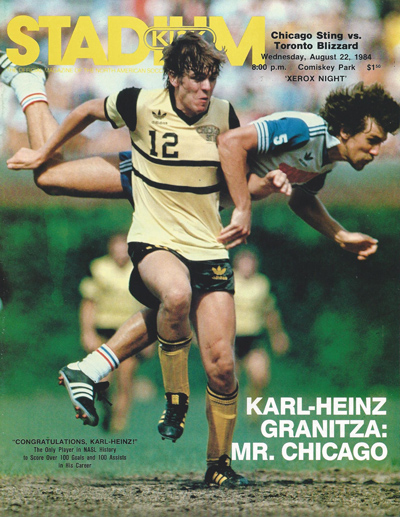
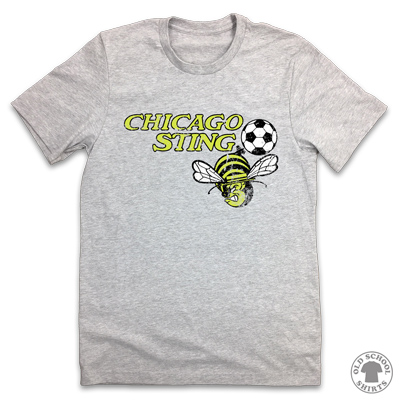
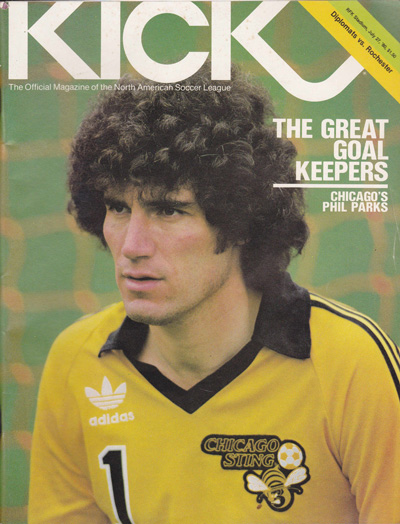
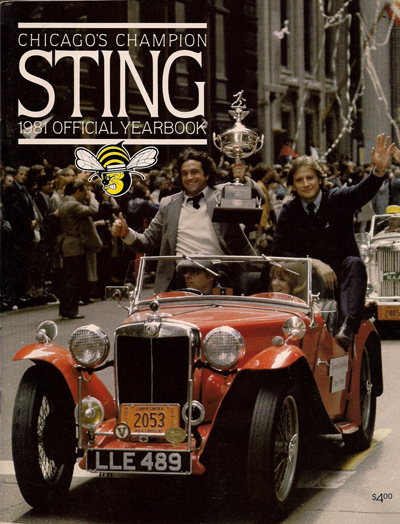
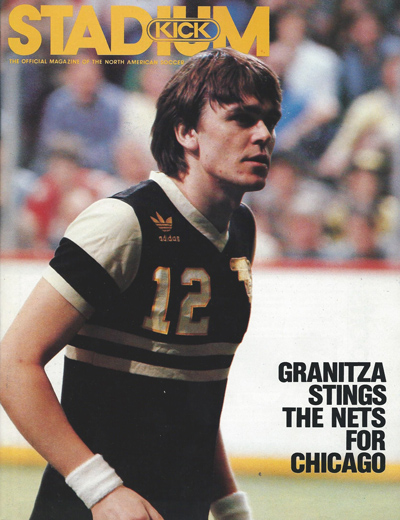
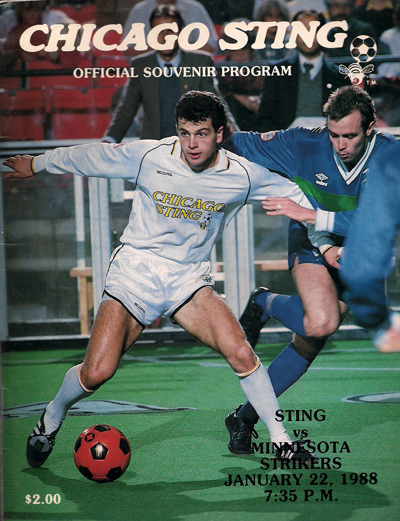
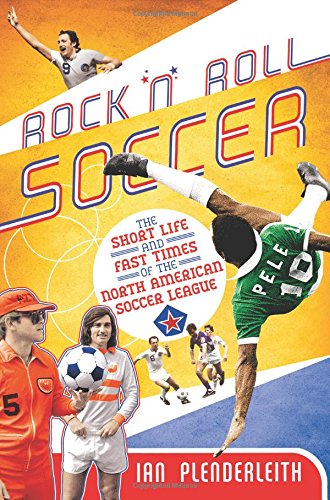
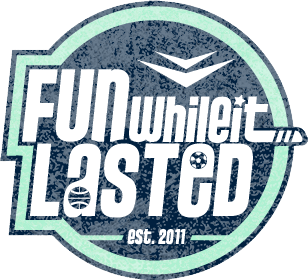
One Response
The final nail in the Sting coffin was hammered in on March 31, 1988 when the Sting blew a 7-2 3rd quarter lead and lost 8-7 in overtime to the Kansas City Comets at Rosemont Horizon. Sting owner Lee Stern was apoplectic after the game: “It was the most disgraceful exhibition I have ever seen. Somebody doesn’t have any guts or brains. I’ve lost enough money here in Chicago. Anybody who wants to buy this team can have it for a nickel, including the players.” No one took Stern up on his offer, as your feature attests.